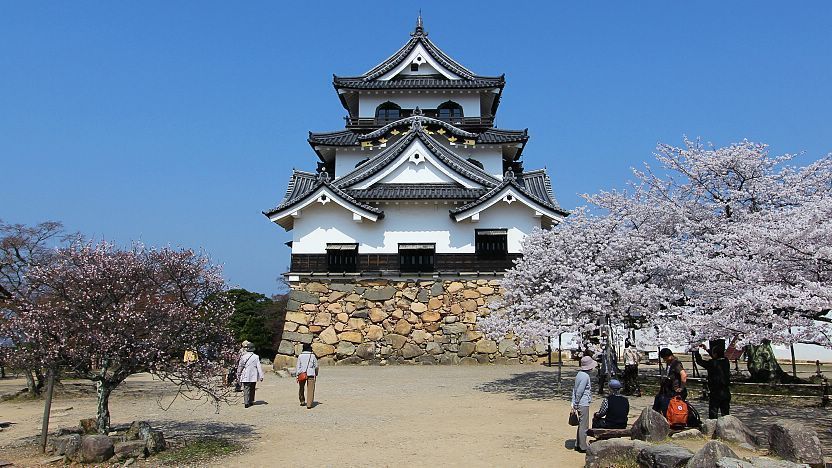
After a construction period of 20 years, Hikone Castle (ĢFŹ¬Åķ, Hikonejō) was completed in 1622. The hilltop castle served as the seat of the Ii clan until the end of the feudal age in 1868.
Hikone Castle is an original castle, i.e. its castle keep has survived the post-feudal era intact. Besides the castle's main keep, most of the inner moats, walls, guard houses and gates also remain intact. Furthermore, parts of the castle's palace buildings have been reconstructed, giving visitors a good impression of a relatively complete Japanese feudal castle.

Hikone Castle's three storied castle keep is relatively small but displays a unique design that combines multiple different architecture styles. This is one reason why the castle keep has been designated a national treasure, the highest designation for cultural properties in Japan, held by only four other castle keeps, namely the ones of Himejijo, Matsumotojo, Inuyamajo and Matsuejo. By climbing the steep stairs on the inside of the castle keep to the top floor, visitors can enjoy views over the castle grounds and the city.
The approach to the hilltop castle keep is also interesting. It includes a spiral ramp onto a wooden bridge that can be easily destroyed in case of an attack. There are also several turrets which can be inspected from the inside as well as a large bell that is still rung several times per day to tell the time. A large store house and a horse stable stand near the castle's main gate.

At the base of the castle hill stands the Hikone Castle Museum whose main attraction is a partial reconstruction of the former palace buildings. The buildings, which include multiple tatami rooms, corridors and gardens, served as the government offices of the lords and have been reconstructed in the 1980s with great care according to excavations. Ordinary exhibition rooms display the clan's family treasures, including arms and armor, kimono, music instruments and documents.
Like many castles in Japan, the grounds of Hikone Castle turn into a popular cherry blossom spot in spring. Hikone's cherry trees reach full bloom usually about a week later than in nearby Kyoto around early to mid April. Not a cherry blossom spot but a place of considerable scenic beauty is Genkyuen Garden located at the base of the castle, just outside of the inner moat.

Getting there and around
Hikone Castle is a 15 minute walk along the straight main road from Hikone Station.
How to get to and around Hikone

Hours and Fees
Hikone Castle
Hours
Closed
Admission
1500 yen (castle, garden and museum)
Typical Visit Duration
Hikone Castle Museum
Hours
Closed
Admission
Typical Visit Duration
Questions? Ask in our forum.